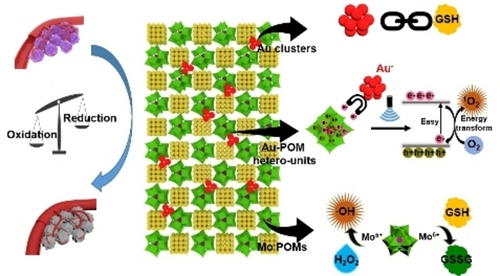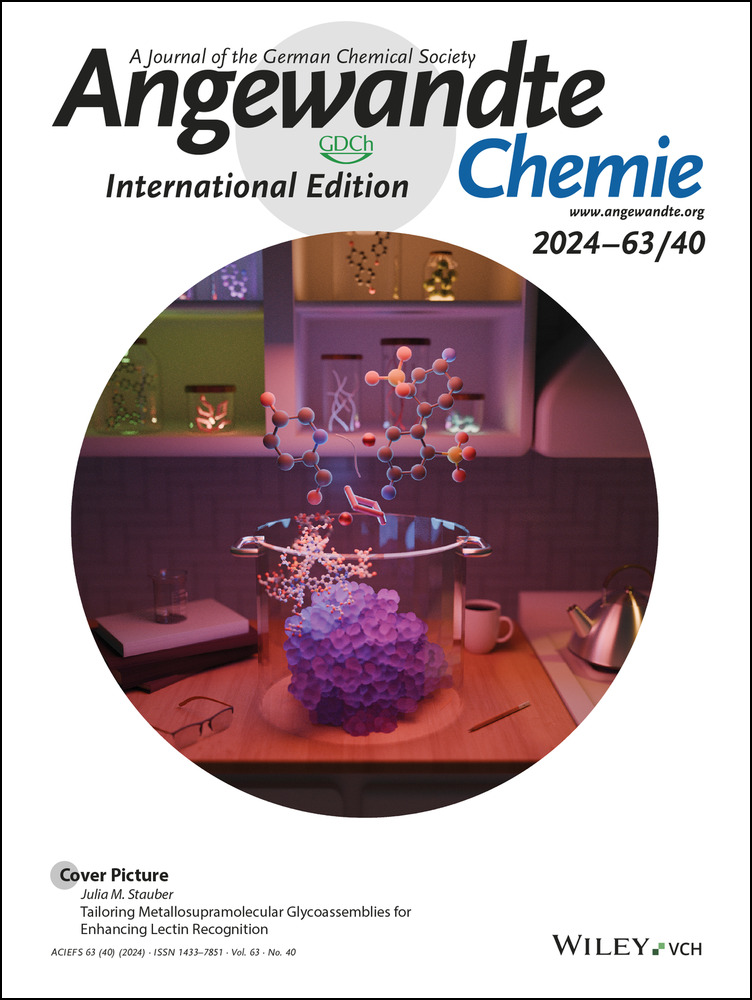Sub-Nanosheet Induced Inverse Growth of Negative Valency Au Clusters for Tumor Treatment by Enhanced Oxidative Stress
Graphical Abstract
Au clusters with negative valence supported by sub-1 nm POM-LDH facilitate the hole-electron separation in POMs and enhance the ROS generation under US, the sub-1 nm Au clusters with ultrahigh surface atom ratios exhibit remarkable efficiency for GSH depletion, the reversible redox of Mo in POM is able to deplete GSH and trigger CDT simultaneously. The serious imbalance of redox in the TME leads to death of tumor ultimately.
Abstract
Cluster aggregation states are thermodynamically favored at the subnanoscale, for which an inverse growth from nanoparticles to clusters may be realized on subnanometer supports. Herein, we develop Au-polyoxometalate-layered double hydroxide (Au-POM-LDH) sub-1 nm nanosheets (Sub-APL) based on the above strategy, where sub-1 nm Au clusters with negative valence are generated by the in situ disintegration of Au nanoparticles on POM-LDH supports. Sub-1 nm Au clusters with ultrahigh surface atom ratios exhibit remarkable efficiency for glutathione (GSH) depletion. The closely connected sub-1 nm Au with negative valence and POM hetero-units can promote the separation of hole-electrons, resulting in the enhanced reactive oxygen species (ROS) generation under ultrasound (US). Besides, the reversible redox of Mo in POM is able to deplete GSH and trigger chemodynamic therapy (CDT) simultaneously, further enhancing the oxidative stress. Consequently, the Sub-APL present 2-fold ROS generation under US and 7-fold GSH depletion compared to the discrete Au and POM-LDH mixture. Therefore, the serious imbalance of redox in the TME caused by the sharp increase of ROS and rapid decrease of GSH leads to death of tumor ultimately.
Conflict of Interests
The authors declare no conflict of interest.
Open Research
Data Availability Statement
The data that support the findings of this study are available from the corresponding author upon reasonable request.





